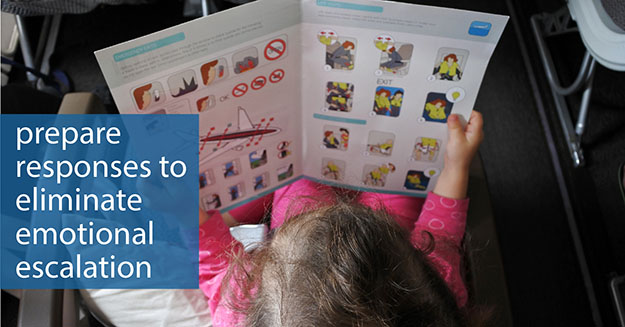
It’s all about calming down so that problem-solving skills can be applied. However, this requires thinking of the skills in the moment before escalating to a point that is too difficult to pull back from.
It is helpful to have a plan in place to manage stressful situations before they happen. During moments of elevated emotion and stress, it is often difficult to think of how to cope with the problem and the emotional fall-out. Much like practicing fire drills, mentally rehearsing a de-escalation plan can increase the likelihood that the skills will be available (in awareness) when they are needed.
For example, interviews with survivors of airline disasters revealed commonalities that the survivors had reviewed the safety cards and had identified the closest exit in the event of an emergency. They were able to make their way to the exit without wasting time trying to think of what to do.
Similarly, people can prepare responses for likely triggers/stressors, thereby lessening or eliminating emotional escalation.
The linked videos offer a few more suggestions for calming down and slowing the heart rate. Key points involve activating the parasympathetic nervous system and the vagus nerve. Every practitioner has their own suggestion for paced breathing (counting seconds of inhaling, exhaling and holding the breath in the space between inhales and exhales). However, exhaling for a longer period than inhaling tends to activate the vagus nerve, which has a calming effect.